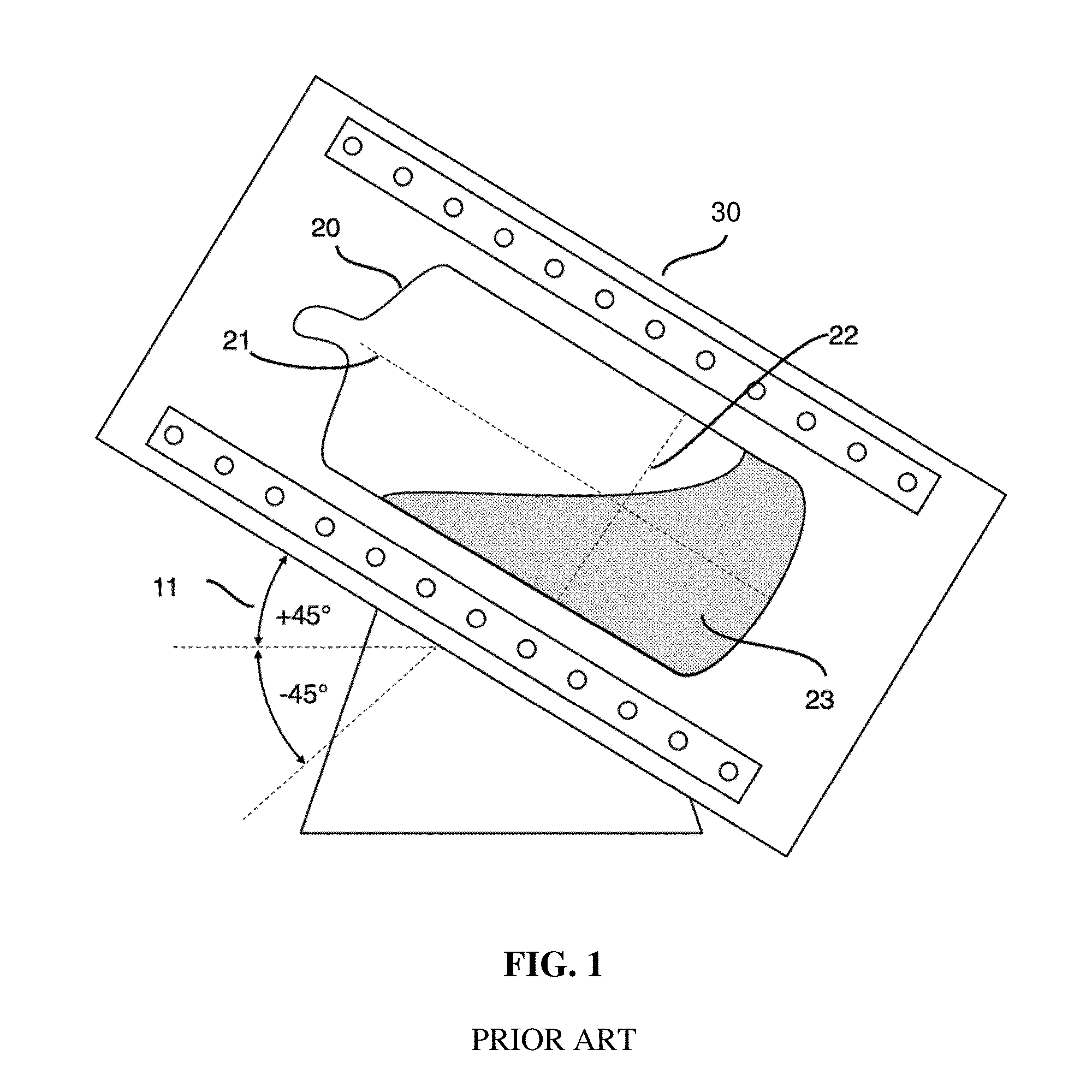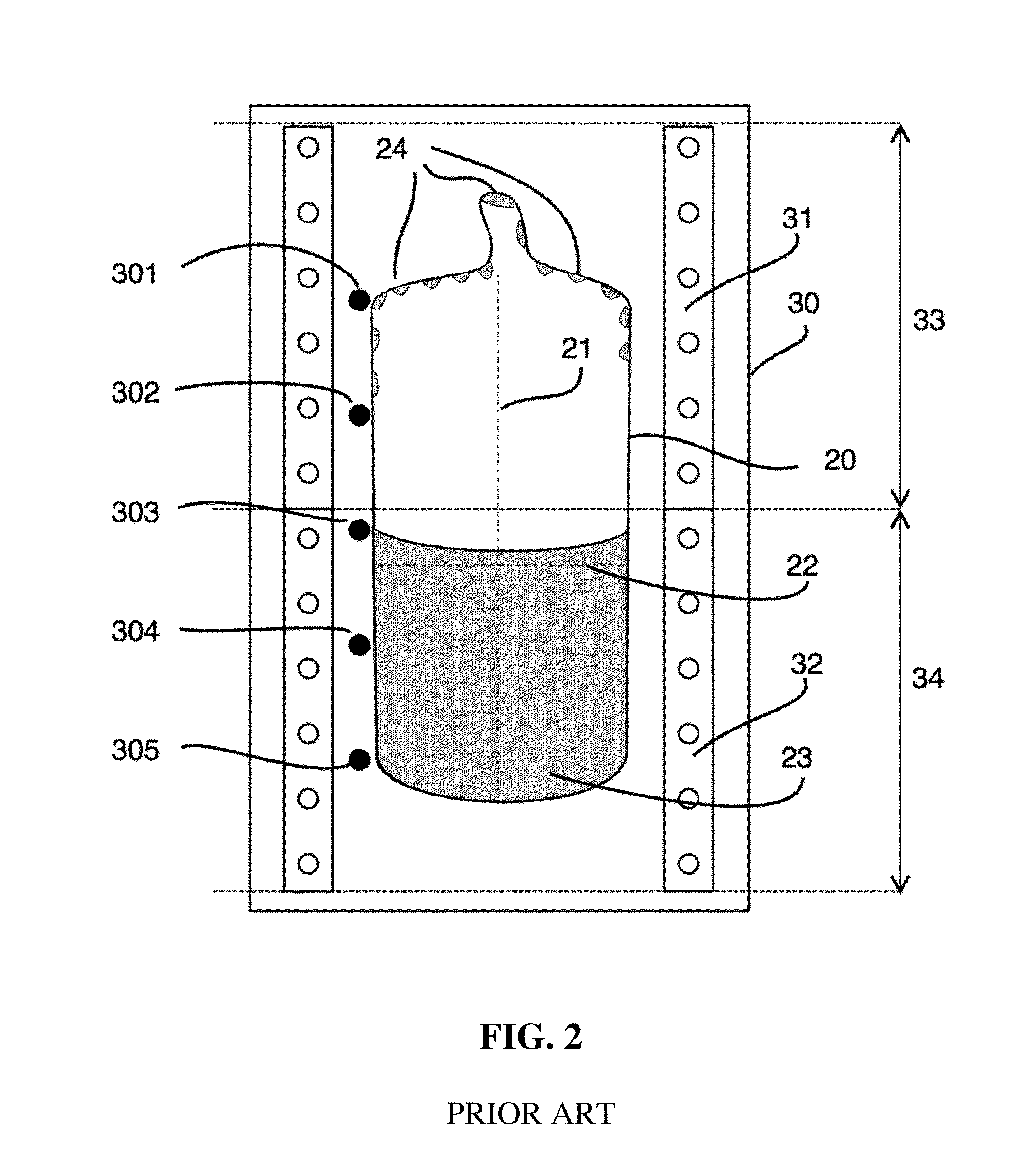Manufacturing process for striae-free multicomponent chalcogenide glasses via multiple fining steps
a chalcogenide glass, multi-component technology, applied in glass tempering apparatus, manufacturing tools, furnaces, etc., can solve the problems of limiting the physical size of the glass that may be fabricated, the thermodynamic instability of the composition of chalcogenide glass with technologically useful properties, and the inability to manufacture optical quality glass in any size, so as to achieve the effect of reducing refractive index perturbations and higher optical quality
- Summary
- Abstract
- Description
- Claims
- Application Information
AI Technical Summary
Benefits of technology
Problems solved by technology
Method used
Image
Examples
example 3
Process of the Present Invention to Make Striae-Free GexAsyS(100-x-y-z)Sez and Other Multicomponent Chalcogenide Glasses
[0036]Germanium, arsenic, sulfur, and selenium precursors sufficient to constitute a glass with the composition of x % at. Ge, y % at. As, z % at. Se and (100-x-y-z) % at. S, where (0≦x≦10, 0≦z≦10 and 30≦x+y≦45) are loaded in a silica ampoule under an inert nitrogen gas atmosphere. FIG. 6 shows a schematic overview of the furnace used in the present invention to synthesize chalcogenide glasses by melt processing comprising a sealed quartz ampoule 200 containing melted GexAsyS(100-x-y-z)Sez precursors 203 inside a rocking furnace 30 having two independently controllable heaters 31, 32 with a ±45° inclination angle 101. The ampoule 200 is cylindrical in shape and has an axis 201 and a diameter 202, and is then connected to a vacuum pump and evacuated for 4 hours at about 1×10−5 Torr. The ampoule has a length, parallel to its axis, and a diameter, perpendicular to the...
example 4
Process of the Present Invention to Make Striae-Free GexAsyS(100-x-y-z)Sez and Other Multicomponent Chalcogenide Glasses
[0045]In this example, glass containing germanium, arsenic, selenium, and tellurium is fabricated without striae and without crystallite inclusions using the process described in Example 3 above with the main difference being the precursor elements and their quantities and the details of the heating schedule. Germanium, arsenic, selenium and tellurium precursors sufficient to constitute a glass with the composition of x % at. Ge, y % at. As, z % at. Se, and (100-x-y-z) % at. Te, where (0≦x≦25, 30≦x+y≦55, and 0≦z≦20) are loaded in a silica ampoule under an inert nitrogen gas atmosphere. The ampoule is then sealed using a methane / oxygen or hydrogen / oxygen torch and placed inside a rocking furnace with a ±45° angle of inclination and two independently controllable temperature zones where it is heated and rocked according to a glass melting schedule, an example of whic...
PUM
| Property | Measurement | Unit |
|---|---|---|
| Temperature | aaaaa | aaaaa |
| Temperature | aaaaa | aaaaa |
| Temperature | aaaaa | aaaaa |
Abstract
Description
Claims
Application Information
 Login to View More
Login to View More - R&D
- Intellectual Property
- Life Sciences
- Materials
- Tech Scout
- Unparalleled Data Quality
- Higher Quality Content
- 60% Fewer Hallucinations
Browse by: Latest US Patents, China's latest patents, Technical Efficacy Thesaurus, Application Domain, Technology Topic, Popular Technical Reports.
© 2025 PatSnap. All rights reserved.Legal|Privacy policy|Modern Slavery Act Transparency Statement|Sitemap|About US| Contact US: help@patsnap.com



